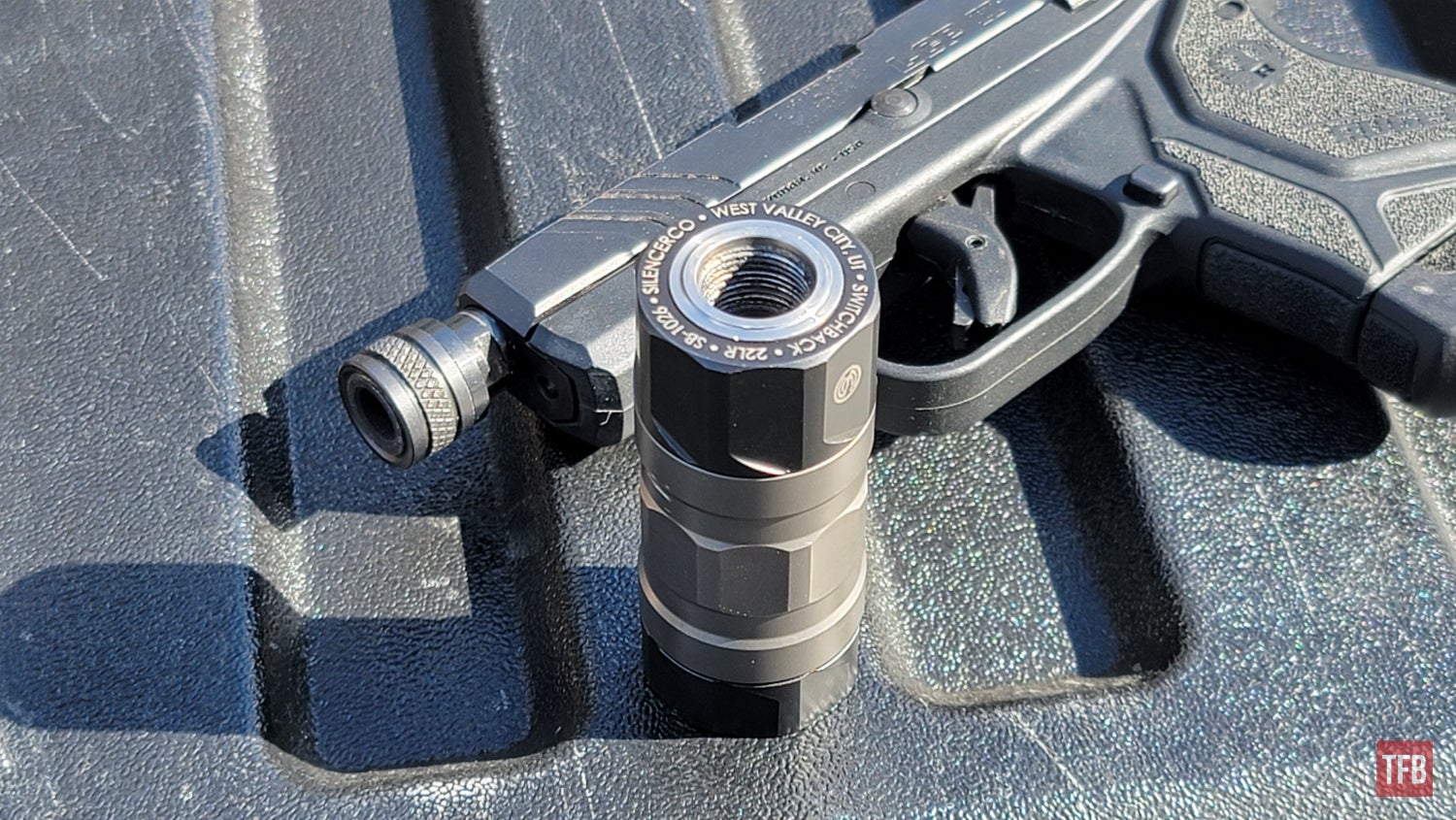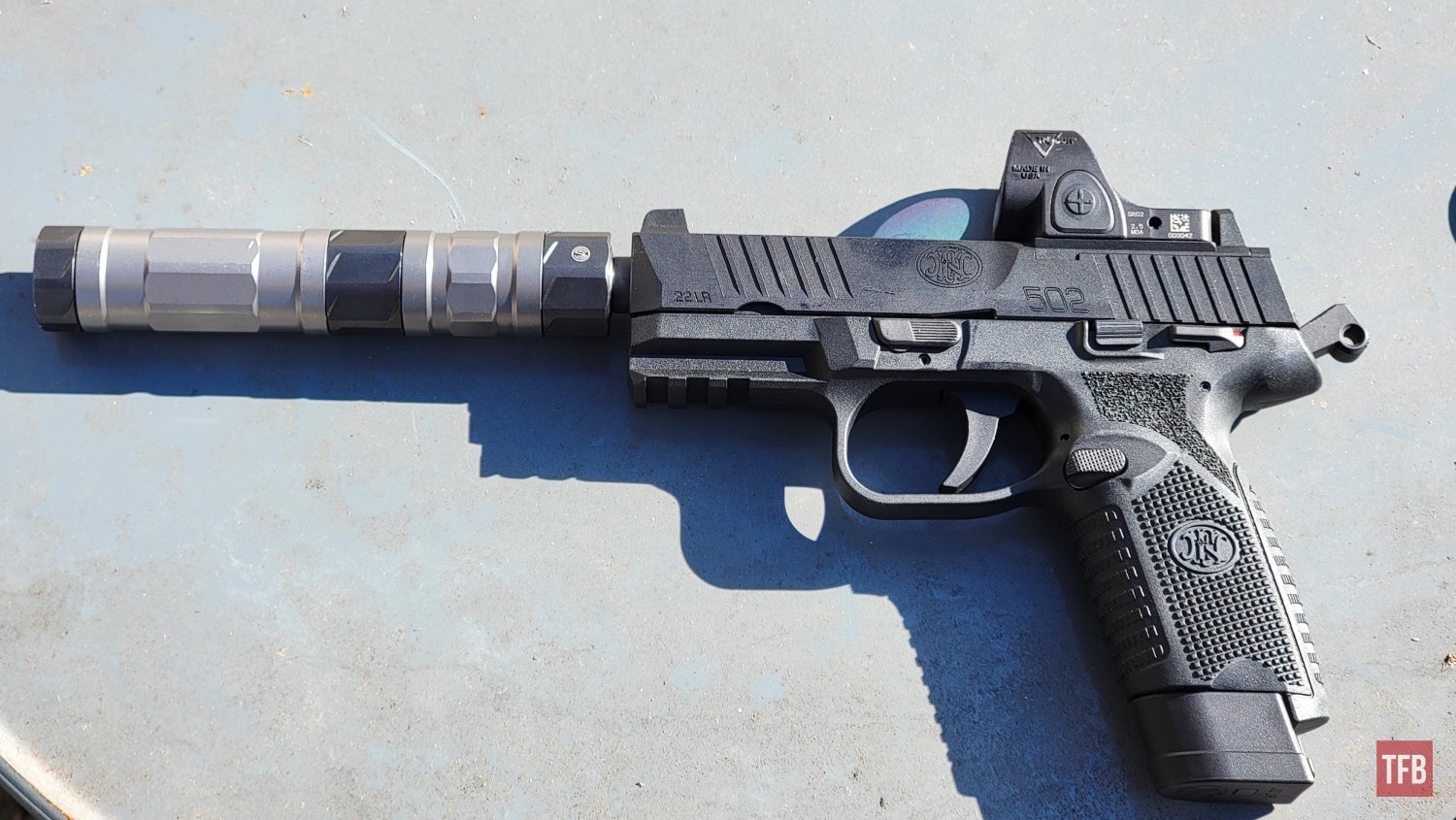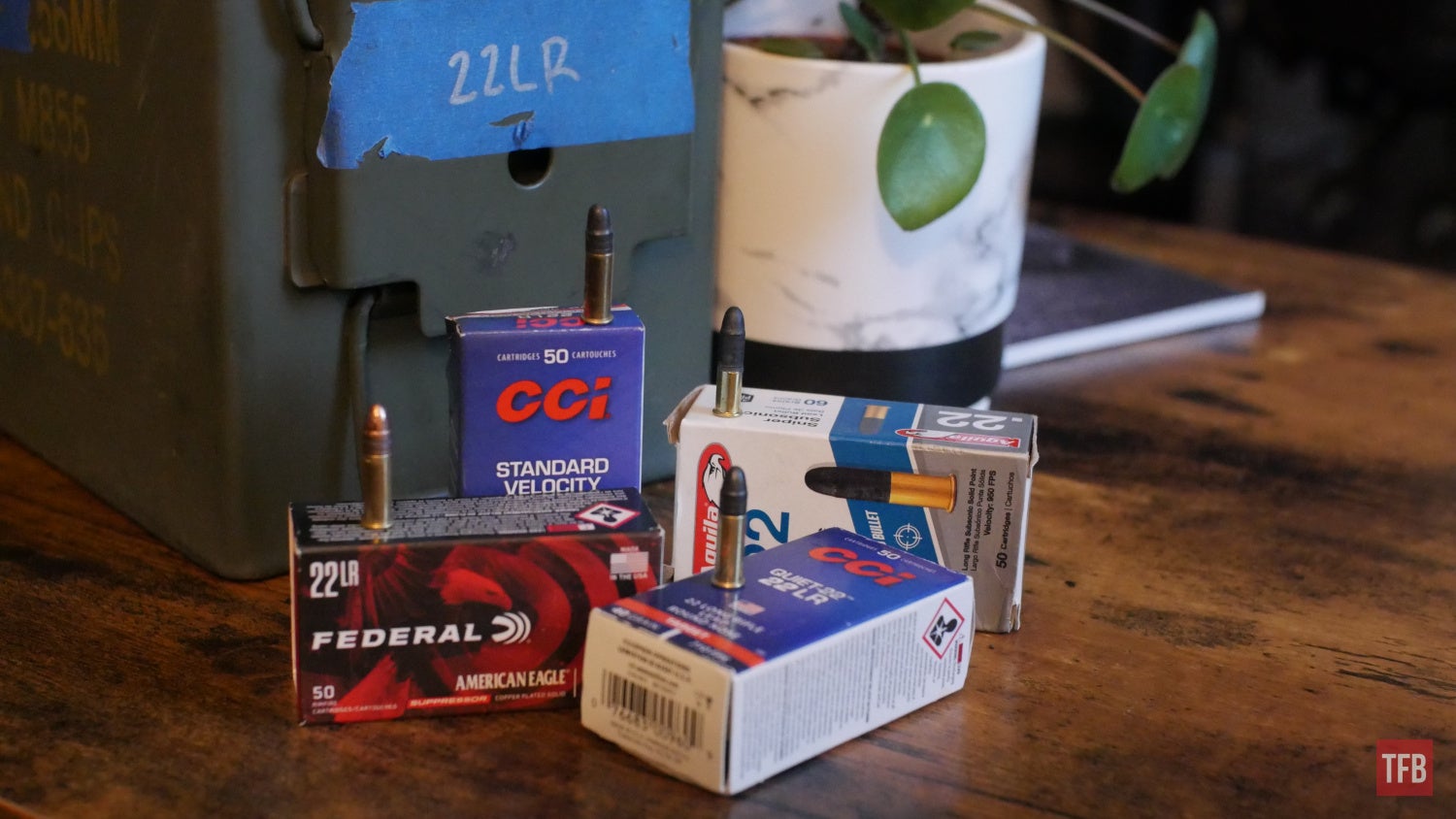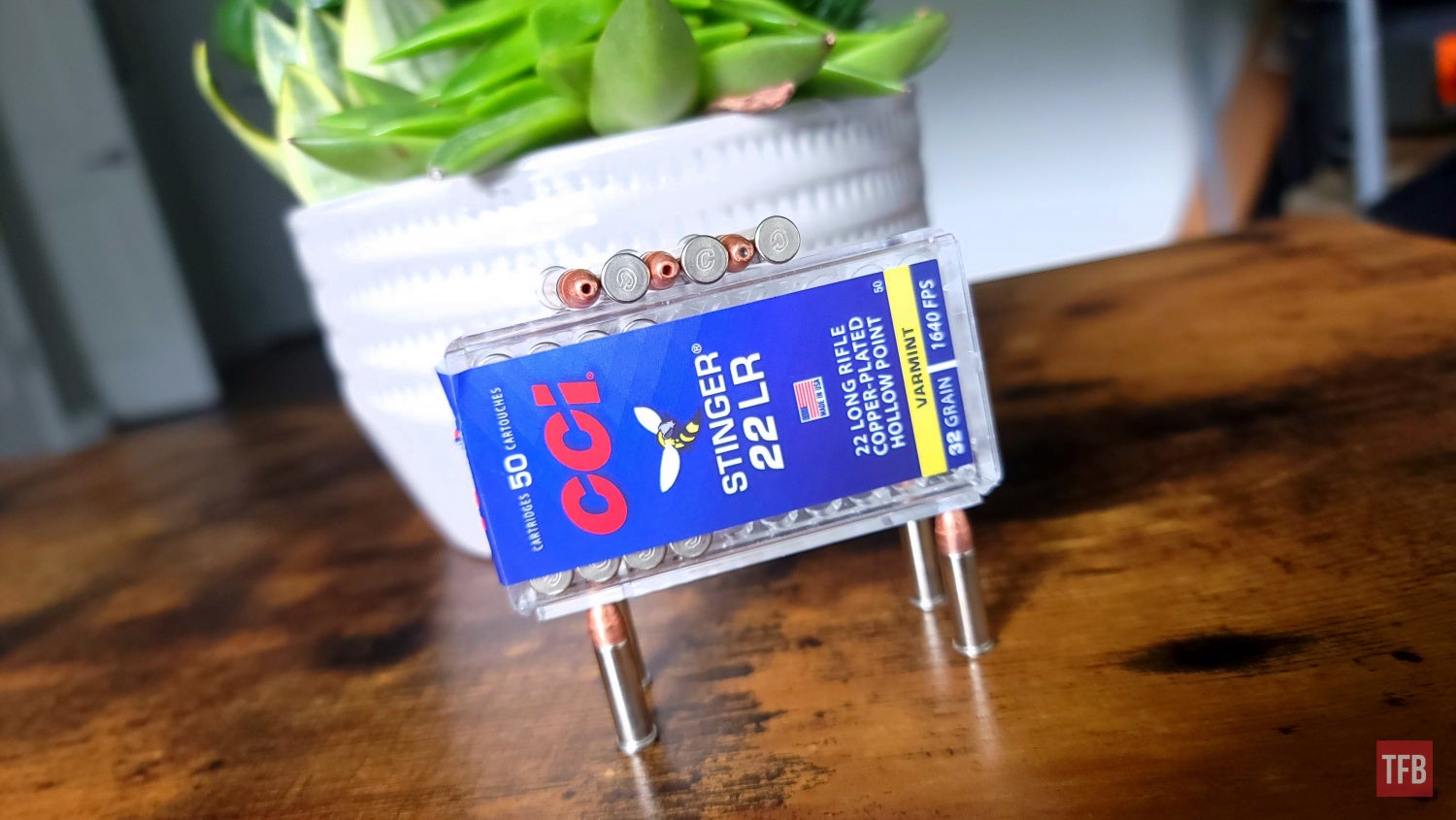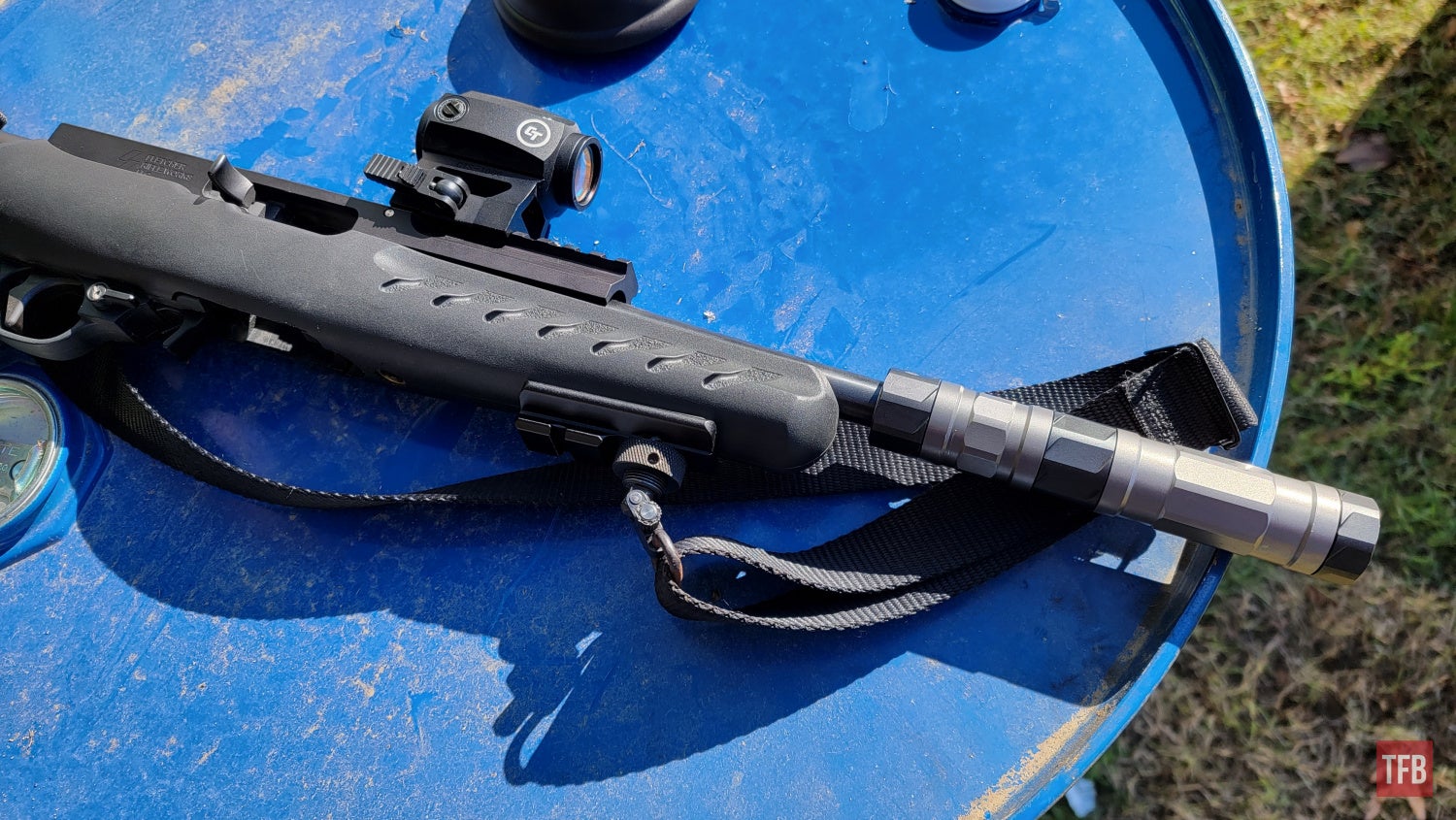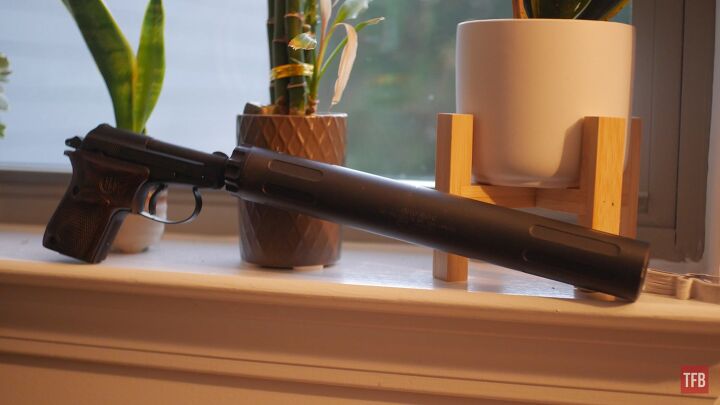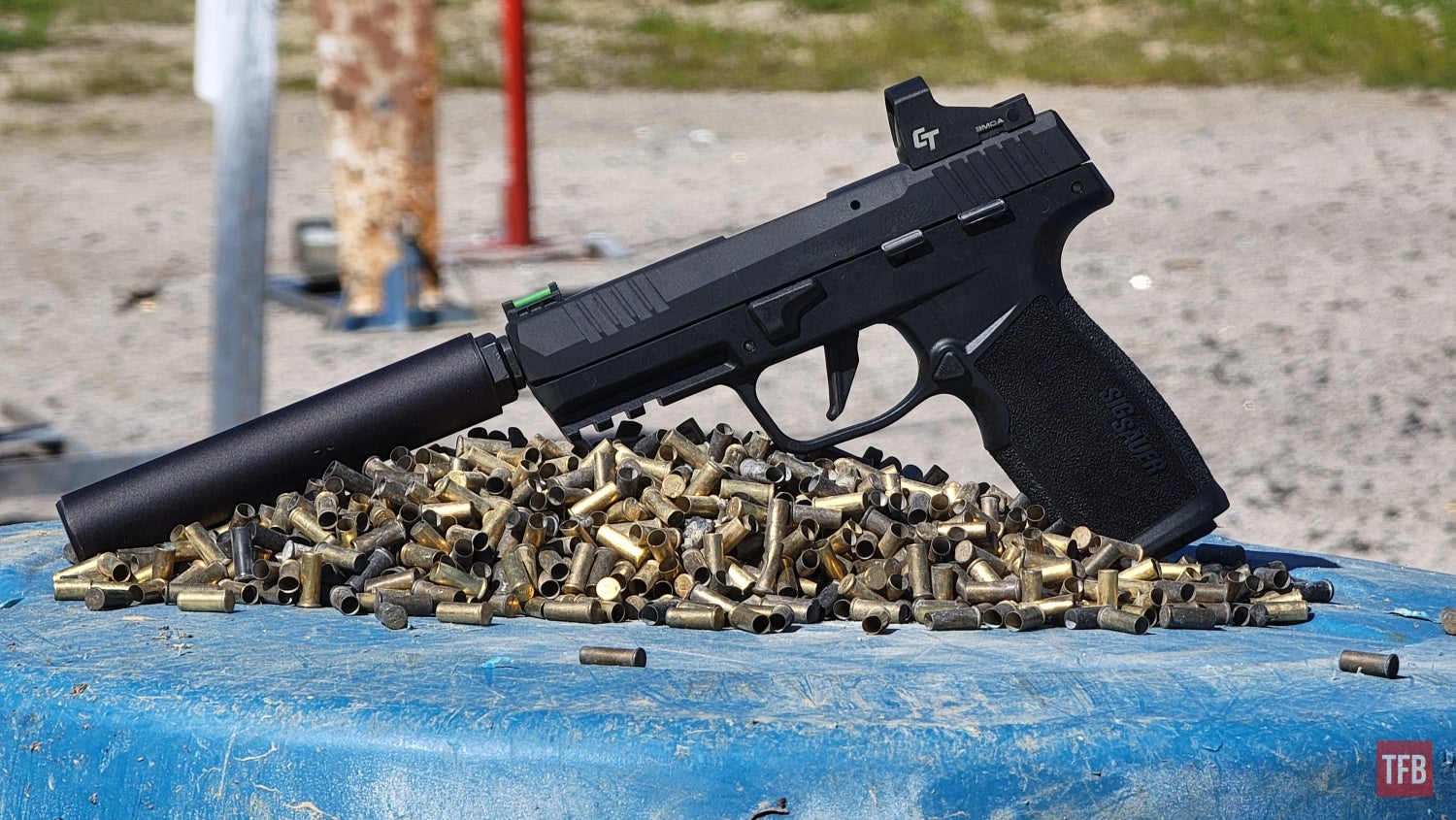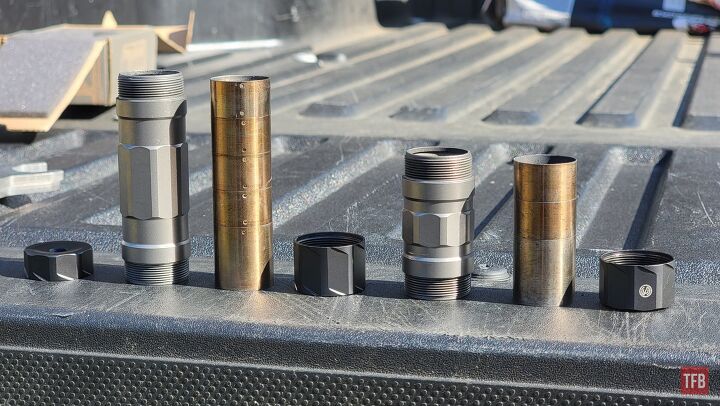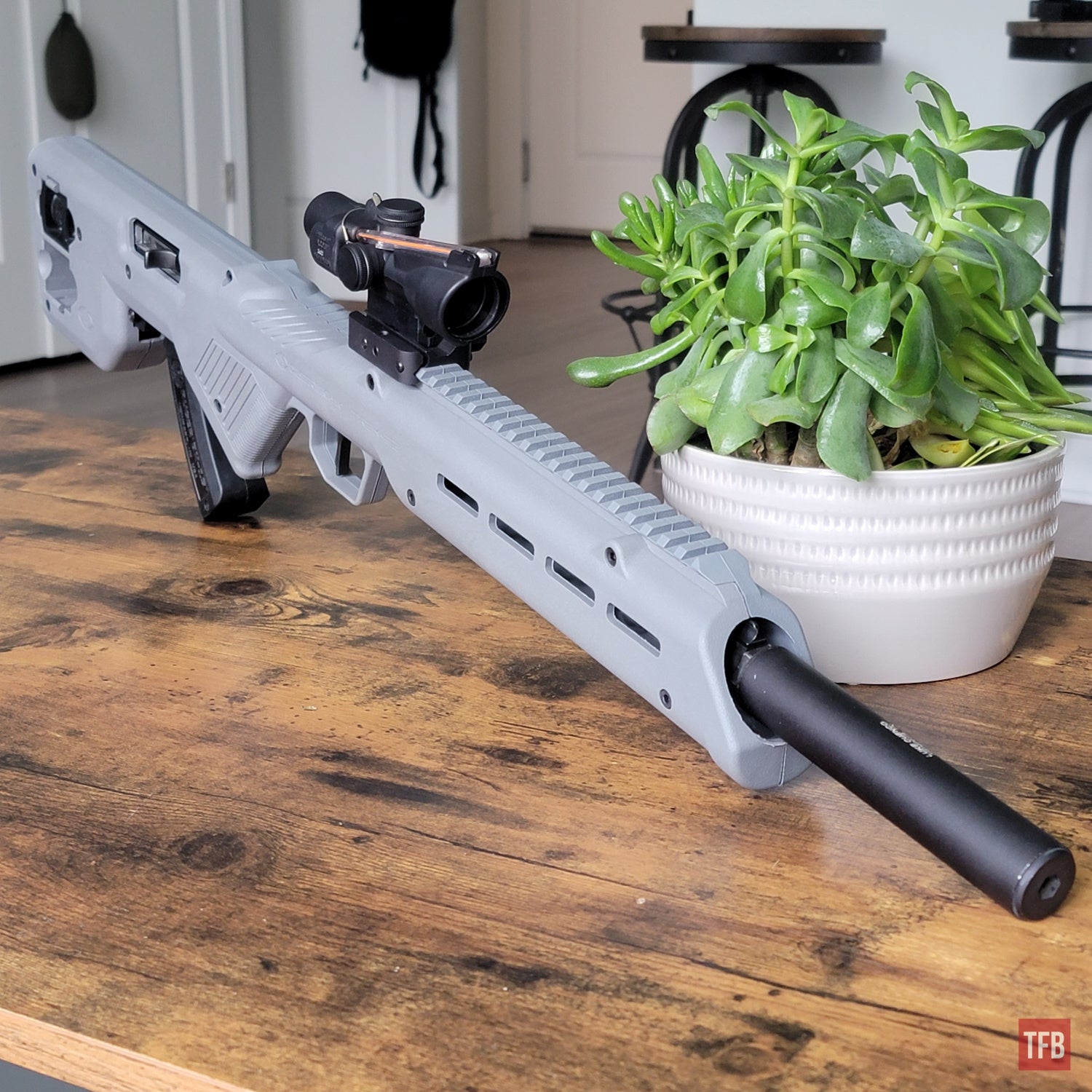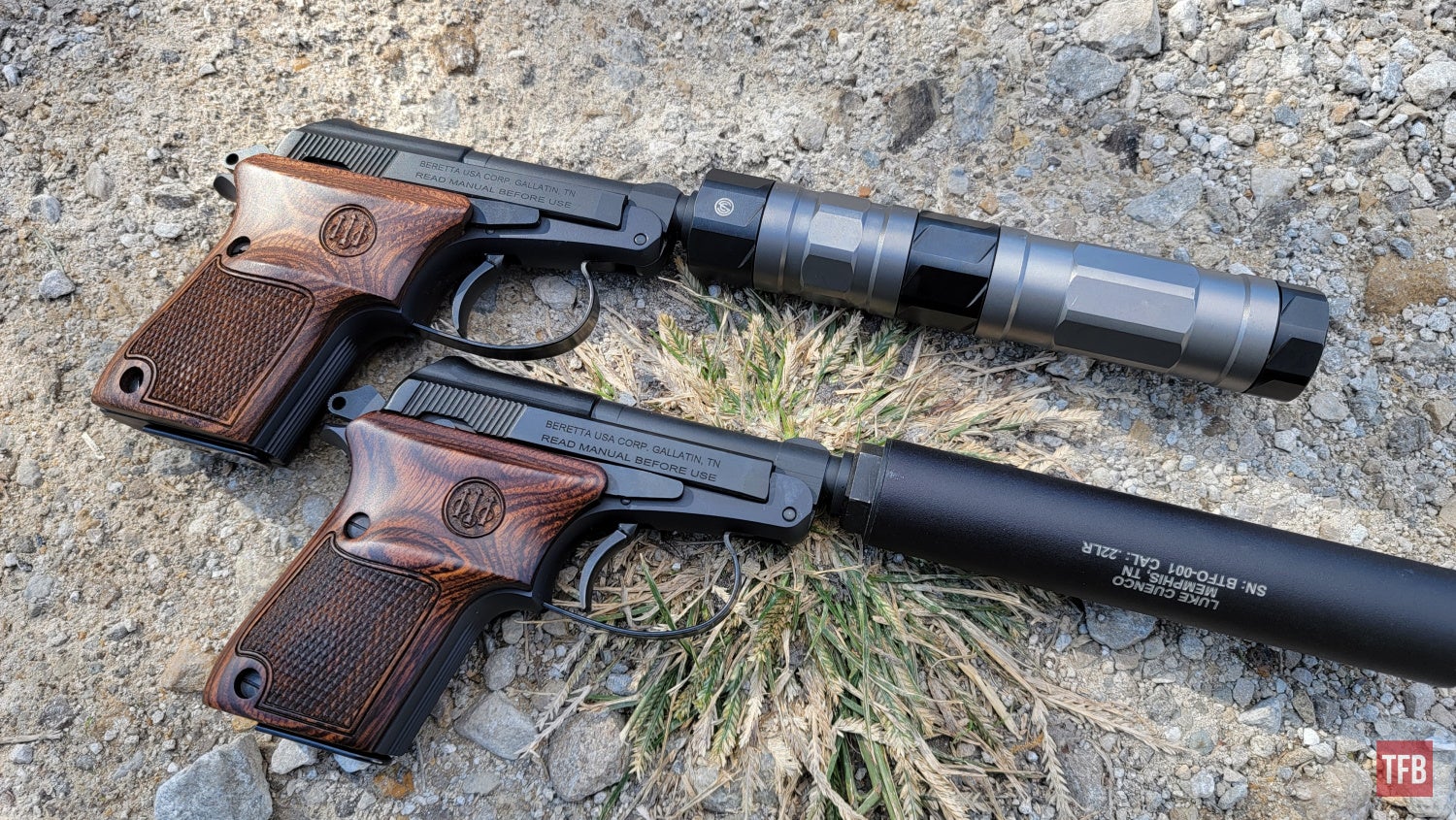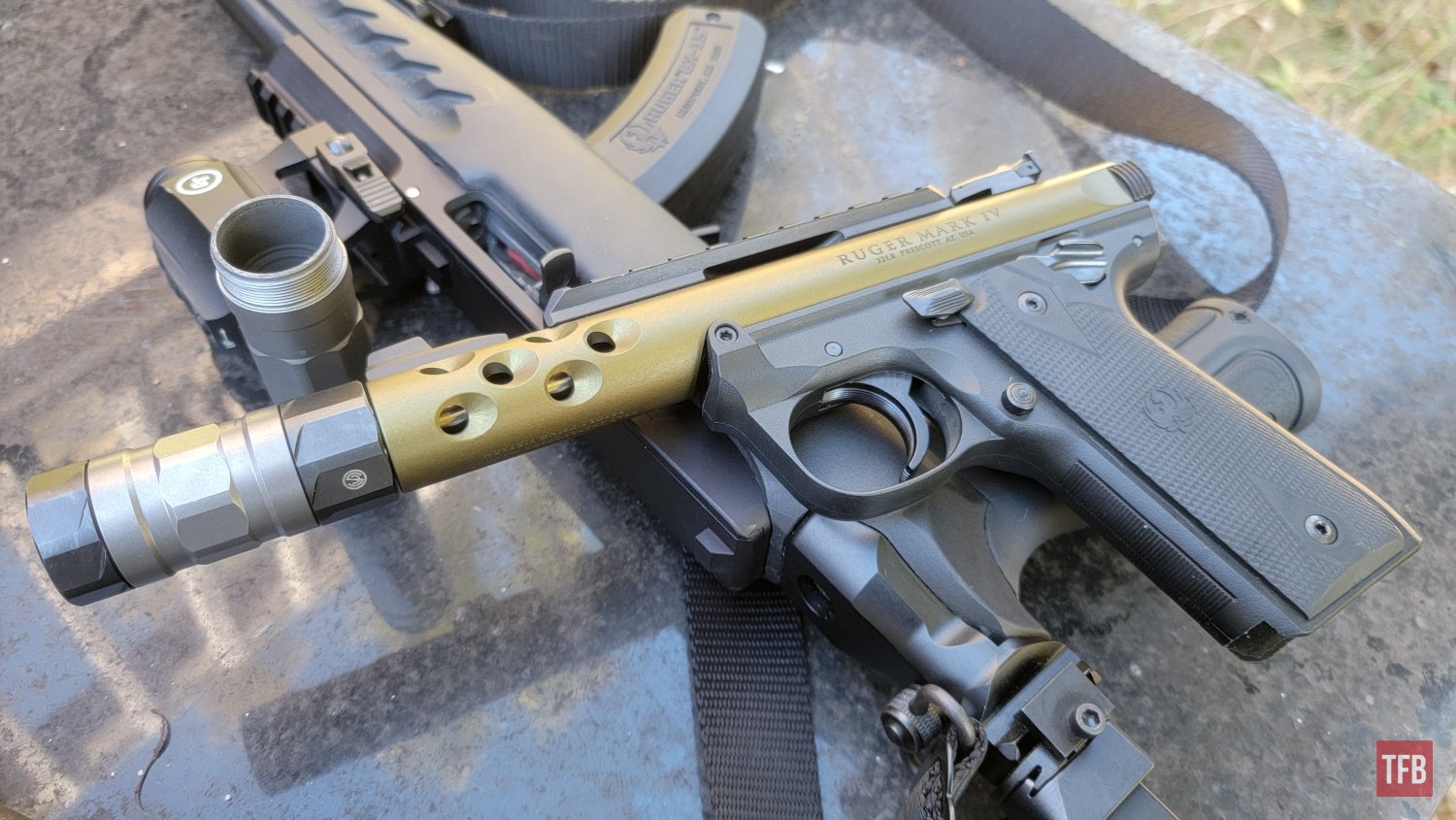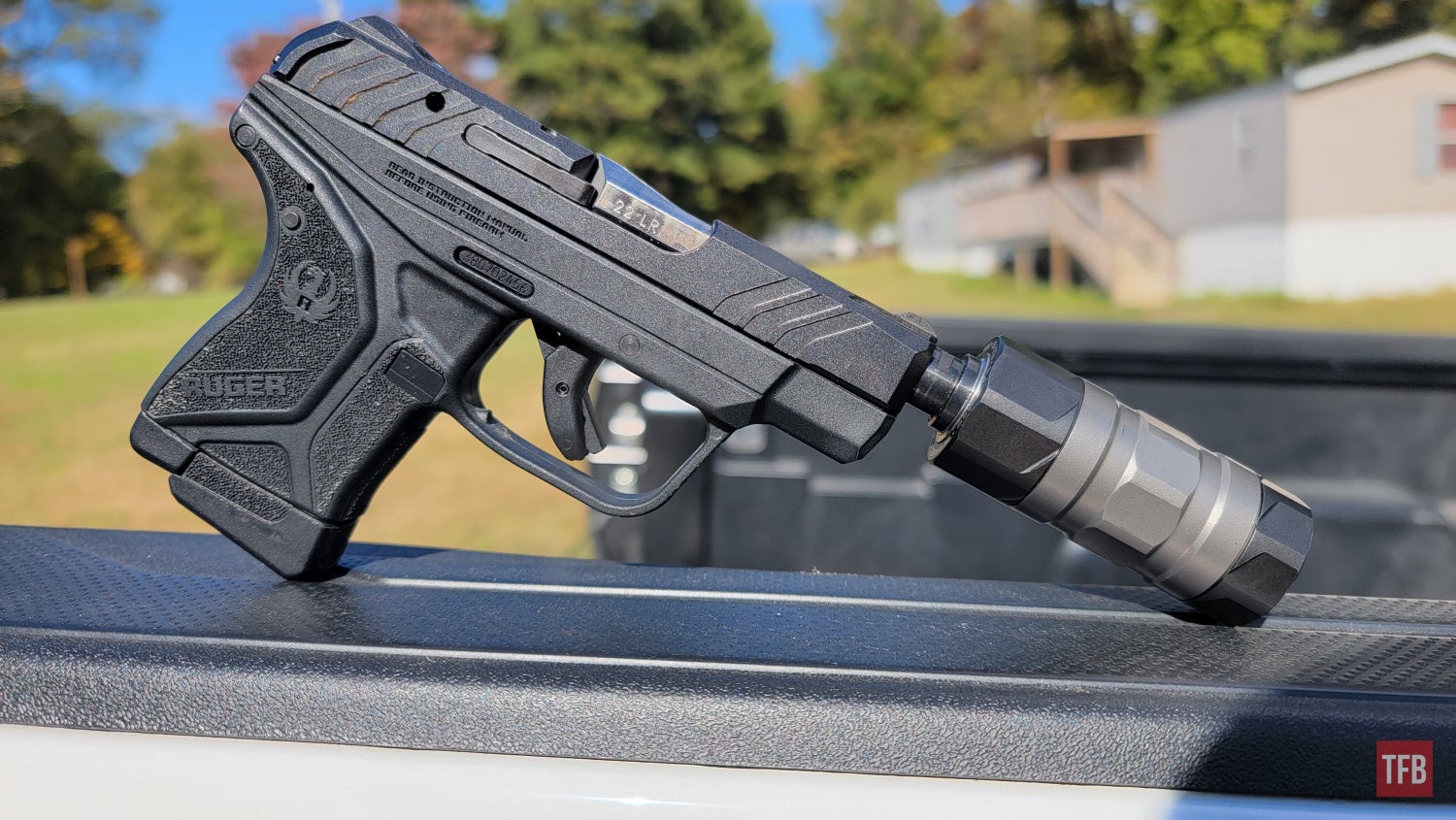Hello and welcome to another edition of The Rimifre Report! This ongoing series is all about the rimfire firearm world and its many guns, sports, history, and more! Last week we talked a bit about fellow writer Rusty S’s well-put-together Tikka T1x 22LR varmint rifle. While I think everyone can appreciate a really nice 22LR varmint slaying rifle, a lot of you seemed to hold the sentiment that there are other rifles out there that are far less expensive that can probably still take to the task more affordably, and you’re probably all 100% right. I’m all for optimizing setups including my 22LR rifles and pistols and this often means borrowing other parts and accessories from some of my more expensive rigs. However, one thing I try my best not to borrow from is the suppressors for my centerfire guns. Suppressing firearms chambered in 22LR seems like it might be a dead simple task but if you’re trying to optimize your setup then there are a few basic rules you can follow to keep costs down, maintenance intervals low, and have your auto-loading guns running smoothly. Today on The Rimfire Report we’ll go over a few basic methods you can follow for suppressing 22LR rifles and pistols to get the best results.
Previous Rimfire Report Articles @ TFB:
- The Rimfire Report: The Ultimate 22LR Varmint Slayer – Tikka T1x
- The Rimfire Report: The Miniature Tippmann Arms 1919 Belt-Fed Pistol
- The Rimfire Report: The Antique $5 Mossberg Brownie Pocket Pistol
The Rimfire Report: The Basics of Suppressing 22LR
Is Suppressing 22LR Even Worth It?
Yes. Never ask that question again. (see below)
The American-180 seen above is using CCI Standard Velocity 40-grain ammunition and an OSS (now HUXWRX) RAD 22 suppressor
Suppressor Host Considerations
There are hundreds of different types of rifles and pistols chambered in 22LR and there is also a myriad of reasons you might want to suppress them. Personally, I find suppressing any 1/2×28 threaded 22LR firearm to be both simple and cheap, and whenever there’s a situation where I can further protect my hearing and lessen the amount of noise I’m producing, I’m probably going to take it. However, not all 22LR firearms suppress equally well and in some cases, suppressing a firearm might be off the table even if it has a threaded barrel.
The greatest noticeable effect you’ll get from a dedicated 22LR suppressor will most likely be from a bolt-action rifle. Since there is no action to cycle and very little in the way of moving parts during the firing process, you’ll simultaneously eliminate the two biggest sources of noise happening behind the muzzle – the action and the report of the round going off. Semi-auto 22LR guns like the Ruger 10/22, and Smith & Wesson M&P 15-22 both suppress really well but you’ll still have to contend with the sound of the cycling action. The Smith & Wesson M&P 15-22 with the dedicated Integra Upper is also a phenomenal option for those with the money and who are absolute rimfire addicts.
One of my favorite obscure aftermarket accessories for the Ruger 10/22 is the Colossic 10/22 bolt lock which allows you to quickly, reliably, and easily lock the bolt of the 10/22 closed for a quieter experience. Industrious 3D printers out there can also find files for similar devices that must be removed and replaced between each firing but the effect is the same.
In my opinion, when it comes to handguns, 22LR handguns benefit the most from suppression. Why? Because they are often less sensitive to different types of ammunition, the effect is most noticeable, and it’s both inexpensive and easy to manage since you don’t have to worry about fiddling around with booster devices (also called Nielsen Devices). By their nature, a vast majority of 22LR handguns feature fixed barrels and this allows you to make use of a direct thread 1/2×28 suppressor without the need for a booster. Some good recent examples include the SIG P322, Taurus TX22 series, Smith & Wesson M&P 22, Beretta 21A Bobcat Covert, and of course the tried and true Ruger MKIV. All of these pistols feature 1/2×28 threads, and fixed barrels making them inexpensive to shoot suppressed. In general, pistols will be louder than rifles or braced pistols due to more gas escaping from the ejection port and suppressor since the cartridge hasn’t had enough time to fully burn its powder, however, dedicated subsonic ammunition can often mitigate that shortcoming.
Ammunition Selection
Ammunition carries similar considerations to firearm selection as not all ammunition is created equally and therefore not all of it will suppress equally. My usual go-to suppressor ammunition is CCI’s Standard Velocity 40-grain ammunition. CCI Standard has an advertised muzzle velocity of 1,070 fps which is about 50 fps under the speed of sound during “standard” weather conditions (at sea level at 59°F). However, this advertised muzzle velocity is most certainly calculated based off of a 20″ barrel length, and to my knowledge, there are very few off-the-shelf threaded 22LR rifles with 20″ barrels. This means that most of your 22LR bolt guns, pistols, and autoloading rifles will feature muzzle velocities well below supersonic or even transonic levels with CCI Standard. This is why that specific ammunition is my “go-to” for suppressed 22LR shooting as it provides the best balance of reliability, consistency, cost, and sound suppression.
22LR suppressors work just fine with higher velocity ammunition, however, depending on the barrel length you’re working with, you still might end up producing harmful sound levels from the firearm and in my opinion, this basically negates the whole point of suppressing the firearm in the first place. Options like CCI Stinger, Velocitor, Winchester Super-X, or any varieties of self-defense ammunition don’t suppress particularly well and are also quite expensive. However, if your goal is pest control duty, then these might still be an attractive albeit louder option for you.
Finally, we have dedicated subsonic ammunition. There are quite a few options out there like CCI Suppressor 45-grain HPs, CCI Quiet, Aguila 40-grain Subsonic, and the colossal and comical Aguila 60-grain Sniper Subsonic. With the exception of CCI Quiet, all of these subsonic rounds are reasonably affordable and are also quite reliable out of both pistols and rifles. One caveat to that might be Aguila 60-grain Sniper Subsonic. This particular ammunition allegedly is optimized for a 1:9 twist rate but I’ve had great success with most of my pistols and rifles and haven’t seen any evidence of keyhole impacts or baffle strikes. CCI Quiet is great and clocks in at a cool quiet 710 fps but also lacks the power behind it to cycle semi-autos reliably.
Suppressor Selection
Nearly any suppressor that has a 1/2×28 threaded muzzle is going to suppress 22LR just fine. However, dedicated 22LR suppressors exist for a reason and the reasons might make you reconsider repurposing your welded 5.56 or larger diameter suppressor for 22LR duty – 22LR is notoriously filthy. When you factor in the more frequent cleaning intervals for 22LR firearms you also have to remember that a lot of that gunk that isn’t in the action of the gun is being propelled out of the front of the gun and into your suppressor. A sealed (welded) suppressor winds up being incredibly hard to clean and with a lot of 22LR use, you’ll probably end up prematurely fouling your baffles and reducing the effectiveness of your can. A few rounds here and there should be fine but any extended or high-round-count use I would strongly advise against.
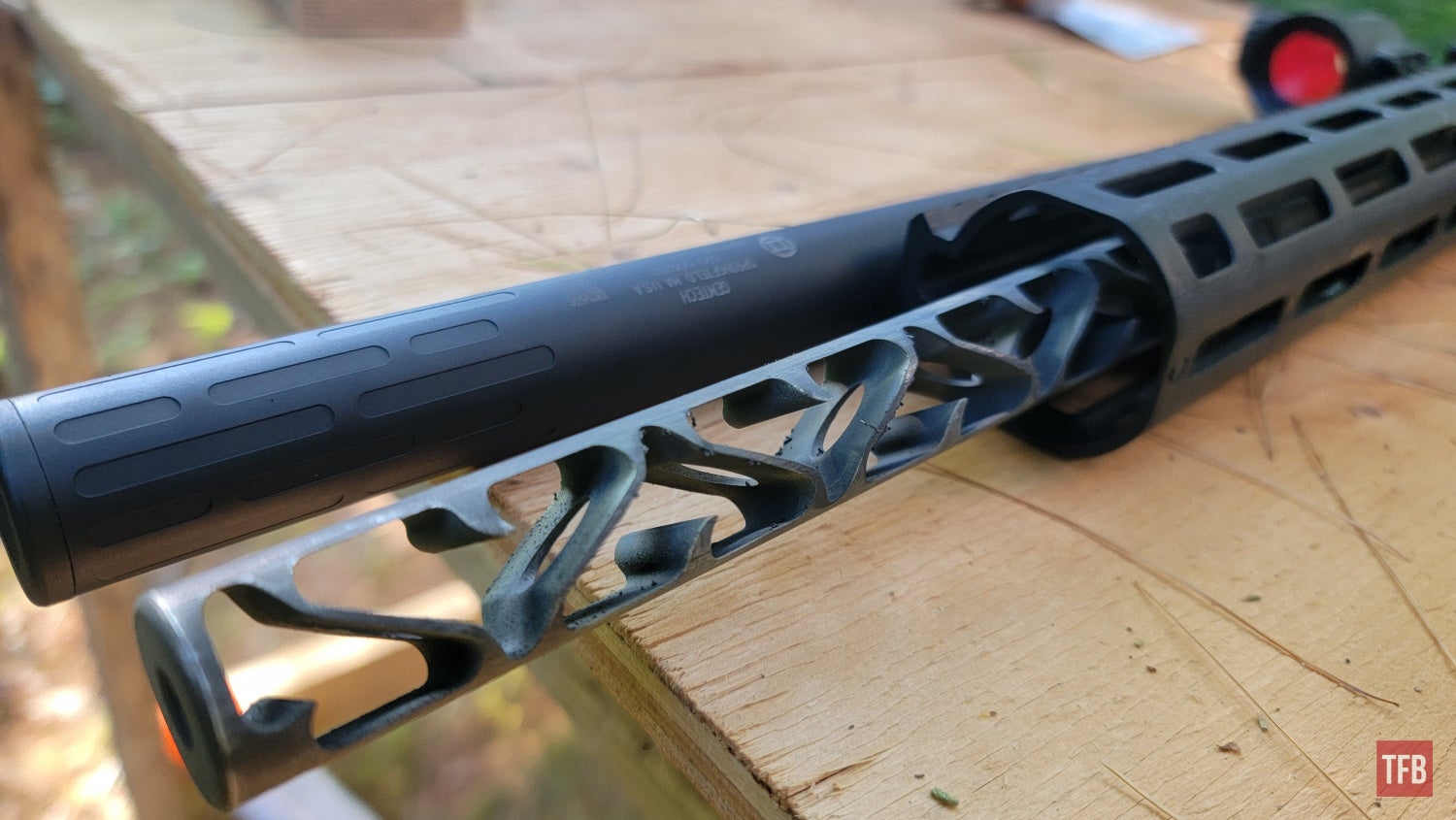
Even dedicated 22LR suppressors like the Gemtech Integra 22 will get fouled pretty easily which is why most 22LR suppressors are 100% user serviceable.
Almost everyone and their mother makes a great 22LR suppressor these days including SilencerCo’s Switchback, Dead Air’s Mask, the CGS Hydra, and AB Suppressor’s Little Bird. All of these suppressors are not only designed for optimal performance with 22LR, but they are all user serviceable and as a result, can be easily cleaned using “the dip” method which requires only simple household chemicals and basically zero extra equipment. Silencer Central’s Banish 22 would also be another great option that falls into this category. A few years ago I would have even recommended that you try your hand at producing your very own Form 1 Suppressor but since the ATF likes to play fast and loose with their rule book that really isn’t a great option right now.
If you’re insisting on buying a 5.56/.223-rated rifle can and making it do double duty on your 22LR guns, then you’ll want to be particularly studious about making sure you’re not depositing tons of debris into it when it’s on your 22LRs, for fully welded and sealed suppressors, your only way to clean would be to dunk it into an ultrasonic cleaner but if your can is particularly fouled, then you might have just cornered yourself into buying a brand new suppressor. Simply put, even though you can shoot 22LR out of your centerfire suppressors, try not to make a habit out of it, especially for high-round count days.
Final Thoughts
Suppressing 22LR on the surface really isn’t that complex of a subject but just like anything else in the firearms world, there is always nuance, personal preference, and hidden drawbacks to certain methods. Dedicated 22LR Suppressors aren’t all that expensive when you factor out the cost of a tax stamp ($200). Even with the addition of the tax stamp, you can often get out the door with a new 22LR suppressor for less than $600 which is often where the least expensive centerfire silencers start being offered at.
One of the greatest benefits I’ve been able to take advantage of with my 22LR suppressors is introducing people to shooting for the first time. Most of the fear, flinching, and distaste for firearms often comes from them being loud and the addition of the suppressor can often turn what many would find to be an unpleasant experience into a fun one since the user is less overwhelmed with loud noises and can concentrate on the shooting aspect.
As always, I’d like to hear your thoughts on this subject. What are your go-to suppressor hosts, ammunition, and suppressors for 22LR pistols and rifles? Do you think there are any major drawbacks to suppressing 22LR firearms that we didn’t address here? Let me know your thoughts down in the comments and thanks as always for stopping by to read The Rimfire Report! We’ll see you all next week!
We are committed to finding, researching, and recommending the best products. We earn commissions from purchases you make using the retail links in our product reviews. Learn more about how this works.



